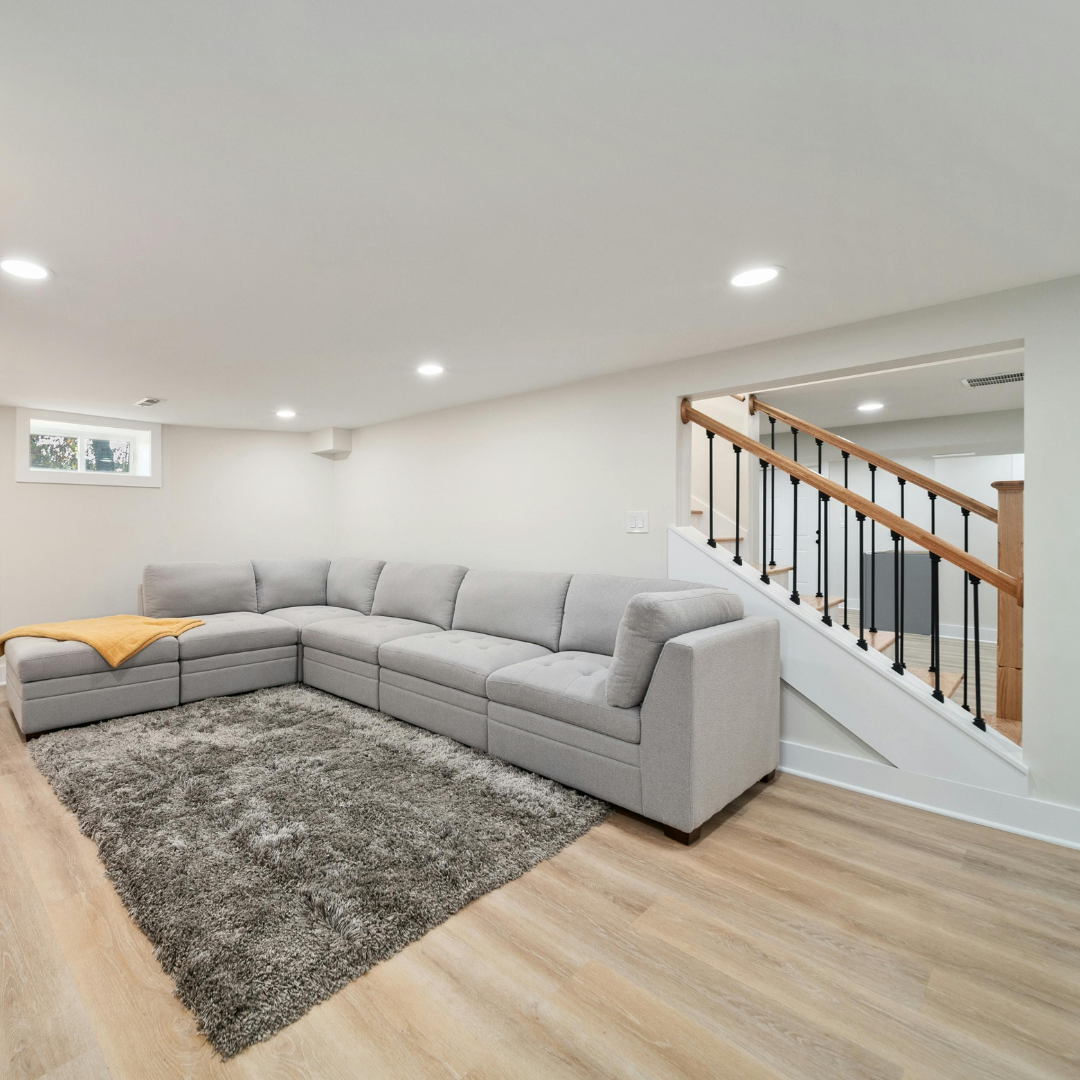Transforming a basement can turn an underutilized space into a valuable asset for any home. With the right approach and planning, homeowners can create functional areas such as guest suites, entertainment rooms, or home offices. This process not only enhances the living space but also increases the property value.
To begin, understanding the unique challenges of basement renovation is essential. Factors such as moisture control, insulation, and lighting play crucial roles in the successful transformation of a basement. Addressing these elements early on can prevent future issues and ensure a comfortable and inviting environment.
After overcoming the initial challenges, creativity can shine through in the design. Homeowners can explore various styles, layouts, and functionalities that suit their lifestyles. Creating a well-designed basement can greatly enhance enjoyment and usability for years to come.
Planning Your Basement Transformation
Transforming a basement requires thoughtful planning. Attention to local building codes, defining the intended use of the space, and developing a design plan are crucial for a successful renovation.
Understanding Local Building Codes
Before initiating any basement remodel, it is vital to understand local building codes. These codes govern aspects such as ceiling height, egress windows, and electrical installations.
Research local regulations to ensure that the finished basement meets safety standards. She should consult with local authorities or a licensed contractor to acquire necessary permits.
Non-compliance could lead to costly fines and potential issues when selling the property. Following these guidelines ensures the basement renovation proceeds smoothly and legally.
Defining the Purpose of Your Basement Space
Clarifying the intended use of the basement helps define the project’s scope. It could serve as a family room, home office, gym, or rental unit.
Specific requirements vary based on the purpose. For example, a finished basement designed for entertainment may require soundproofing and plumbing for a wet bar.
She should visualize how different elements, such as lighting and furniture layout, will contribute to the functionality of the space. This step is crucial for avoiding costly changes later.
Creating a Detailed Design Plan
A well-structured design plan is essential for a successful transformation. This plan should include layout, materials, and a budget.
Begin with a floor plan that outlines where walls, furniture, and storage will go.
Materials should be selected based on their suitability for basement environments. Water-resistant paints, flooring, and insulation are important considerations.
Establish a budget by estimating costs for each phase of the project. He should account for materials, labor, and unexpected expenses.
A detailed plan will guide the entire renovation process, ensuring nothing is overlooked.
Key Considerations for Remodeling
Effective remodeling requires attention to several important aspects. Ensuring adequate insulation, optimizing natural light, and incorporating organizational solutions are crucial for a successful transformation.
Ensuring Adequate Insulation and Energy Efficiency
Insulation is vital in maintaining a comfortable temperature and reducing energy costs. A well-insulated basement can prevent heat loss and dampness.
- Types of Insulation: Some popular options include foam board, spray foam, and fiberglass batting. Each has distinct benefits that suit varying basement conditions.
- Energy Efficiency: Upgrading windows and doors can significantly enhance energy efficiency. Double-pane windows provide better insulation, while proper sealing of air leaks ensures a controlled environment.
- Heating Options: Consider using energy-efficient heating systems, such as radiant floor heating or high-efficiency HVAC units. This ensures consistent warmth while keeping utility bills manageable.
Optimizing Natural Light and Proper Lighting
Maximizing natural light can transform a dark basement into an inviting space. Proper lighting complements natural sources and enhances the overall ambiance.
- Maximizing Windows: If possible, increase window size or add new ones to allow more sunlight. Proper placement is key for optimal light exposure.
- Artificial Lighting: Layer lighting with ambient, task, and accent lights. Use LED fixtures as they are energy-efficient and available in various styles.
- Color Choices: Opt for light-colored walls and furnishings. This helps reflect light, making the space feel larger and more open.
Incorporating Effective Organization and Storage Solutions
A well-organized basement enhances functionality and aesthetics. Thoughtful storage solutions can prevent clutter and create a more usable environment.
- Built-in Storage: Consider custom-built-ins or shelving to maximize vertical space. This keeps essential items accessible while maintaining order.
- Multi-Functional Furniture: Use furniture that doubles as storage, such as ottomans with hidden compartments or benches that open up.
- Clear Bins and Labels: Use clear bins for visibility. Labeling ensures quick access to items, making organization easier and more intuitive.
With these considerations, the basement remodel can be both functional and visually appealing. Each aspect contributes to a well-designed and user-friendly space.
Designing Specific Basement Areas
Transforming a basement into functional areas can greatly enhance its usability. This section explores different designs suitable for various needs, from a productive home office to a cozy family room.
Creating a Home Office or Studio
Designing a home office requires careful consideration of lighting, acoustics, and organization. A well-lit space supports productivity, so maximizing natural light through windows or adding bright, adjustable lighting is essential.
Key Design Elements:
- Ergonomic Furniture: Choose a comfortable chair and desk to promote good posture.
- Storage Solutions: Implement shelves and cabinets to keep the workspace tidy.
- Soundproofing: Consider acoustic panels to minimize noise distractions.
A studio can follow similar principles but should prioritize flexibility. Incorporate adjustable lighting and ample counter space for creativity.
Developing a Family Room or Home Theater
A family room or home theater should focus on comfort and entertainment. Comfortable seating like sectional sofas or recliners can enhance the viewing experience.
Important Features:
- Screen Setup: Install a large screen or projector for optimal viewing.
- Sound System: Incorporate surround sound for an immersive experience.
- Ambient Lighting: Use dimmable lights to create a theater atmosphere.
Adding a snack bar or mini-fridge can also make movie nights more enjoyable.
Designing a Home Gym or Multi-Purpose Room
A home gym must include versatile equipment for various workouts. Allocate space for cardio machines, weights, and yoga mats.
Essential Considerations:
- Flooring: Choose durable, easy-to-clean materials, like rubber or foam.
- Mirrors: Install mirrors to check form during workouts and enhance the space visually.
- Ventilation: Ensure good airflow through windows or a fan.
For a multi-purpose room, incorporate flexible furniture that can be easily moved or rearranged, enabling the space to serve multiple functions.
Adding Specialized Spaces like Wine Cellars and Laundry Rooms
A wine cellar should balance aesthetics and functionality. Temperature and humidity regulation are crucial for wine preservation.
Design Tips:
- Storage Racks: Use wooden racks or climate-controlled cabinets.
- Lighting: Soft, ambient lighting showcases the collection without affecting the wine.
A laundry room should be practical and efficient. Optimize layout with front-loading machines stacked to save space.
Key Features:
- Counter Space: Include a folding area for convenience.
- Storage: Add cabinets for supplies and laundry baskets.
Incorporating these specialized areas into a basement can greatly enhance its value and functionality.
Final Touches and Maintenance
Creating a functional and appealing basement involves careful selection of furnishings and ongoing maintenance. Focusing on these areas ensures the space remains inviting and practical for various uses.
Selecting Furnishings and Decor
When choosing furnishings for a basement, consider the intended use. For a game room, opt for comfortable seating and a durable table. A living room setup might require a sectional sofa and entertainment unit.
Key factors include:
- Size: Ensure furniture fits the space without crowding it.
- Style: Match decor with the home’s aesthetic to create cohesion.
- Functionality: Multifunctional furniture, such as a sofa bed for a guest room, can maximize usability.
Select decor that adds personality. Wall art and lighting can enhance atmosphere. For toy storage in a play area, bins or shelves keep the space organized.
Implementing Regular Maintenance and Updates
Regular maintenance of the basement is crucial for longevity and comfort. This includes inspections for moisture issues, which can lead to mold or structural damage.
Key maintenance tasks:
- Check insulation: Ensure it is intact to keep the temperature regulated.
- Inspect plumbing and electrical systems: Address any issues promptly to avoid larger problems.
- Routine cleaning: Vacuum and dust to maintain a fresh environment.
Updating decor and furnishings is also essential. Every few years, consider refreshing paint or replacing worn items to keep the space looking appealing. Regular updates help adapt the basement to changing needs, whether transitioning from a man cave to an additional guest room.



